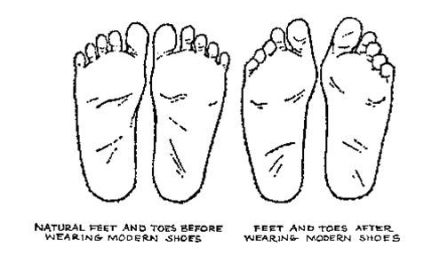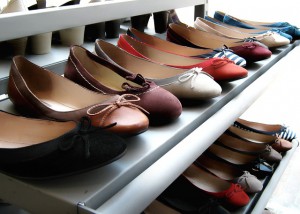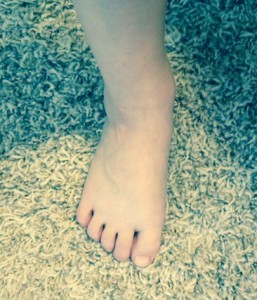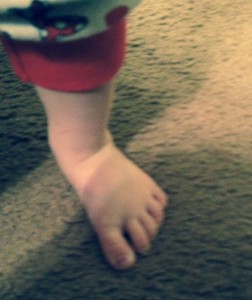 You already understand plantar fasciitis. So what is plantar fasciosis?
You already understand plantar fasciitis. So what is plantar fasciosis?
This article discusses a 2003 study that is changing the thinking about the cause of what is commonly known as plantar fasciitis. Though the thinking may be changing, plantar fasciitis is still the term generally utilized to describe heel pain.
Thus, according to medical records, plantar fasciitis is one of the most common reasons for doctor visits in the United States. In fact, it is reported that more than one million visits every year are related to this type of heel pain.
Why is it so common in the United States? Is it the same in other countries? Apparently, it is quite common in most “modernized” countries. This is not the case in countries where people still walk barefoot most often, however.
Changing a Deeply-Held Belief
Let me elaborate on this some more. But first, some history…
Back in 2003, Temple University podiatrist Harvey Lamont published information in the Journal of the American Podiatric Medical Association regarding a study he had done based on 50 heel spur patients who suffered from chronic plantar fasciitis.
Dr. Lamont had harvested small amounts of plantar fascia tissue from the feet of these 50 patients during surgery. In each surgery, he had cut the fascia tissue away from the heel in order to relieve the pain.
As he studied the fascial tissues, Dr. Lamont found that his patients did not have a problem with inflammation. Instead, the damage of plantar fasciitis was shown to be related to micro-tears in the plantar fascia ligament.
This discovery was contrary to the popular belief that had existed for more than 20 years, that plantar fasciitis was due to inflammation of the plantar fascia tissue.
Discovering a Potential Cause
In addition to the micro-tears, Dr. Lamont also found that there were dead cells in each of the fascial tissue samples. Cell death, called necrosis, is commonly related to having limited blood flow in an area of the body. The limited blood supply causes some of the cells in the area to degenerate and then die.
When a Portland podiatrist named Ray McClanahan read this study he began to wonder what might cause this damage. He concluded that it was, in fact, a problem of reduced blood supply in the sole of the foot.
Most of the blame was placed on our common footwear that was distorting the shape of our feet, particularly our toes. According to McClanahan, modern shoes not only squeeze the toes due to a tapered toe box, they also tend to pull the toes upward. These two things stress the muscles that allow us to wiggle our toes, pushing the big toe inward toward the center of the foot as well as upward, out of its normal position.
The resulting misalignment of the toes can then begin to pull on other foot structures. These foot structures may in turn pinch an important artery, the posterior tibial artery that carries blood to the bottom of the foot.
Such pinching may then reduce the flow of blood near the areas where plantar fasciitis pain occurs. Over time, degeneration of the fascia begins to occur.
Comparing Young and Old Feet
For an example of what can happen to our feet, first look at the feet of a child. A normal child’s foot will be wider at the toes than at the ball of their foot. The two example pictures shown here are of my 4-year old grandson’s foot (he kept curling up his toes) and my almost 2-year old granddaughter’s foot (who doesn’t stand still).
Now look at your own feet. Are your toes wider than the ball of your foot? Perhaps they still are if you are young. When I looked at my 60-year-old feet I found that my big toes, in particular, were bent inward significantly, just as in the picture at the top of this post.
I can easily believe that this is due to wearing shoes most of my life. I never was one who liked to go barefoot!
Let me be clear. This is not at all to say that there aren’t other factors or reasons for heel pain. The 17 Common Causes of Heel Pain article on this website discusses other potential factors.
Fasciitis and Fasciosis
Since the research showed that the plantar fasciitis issues of these 50 patients were not a result of inflammation, Lamont stated that plantar fasciitis was not a proper term to use to describe this type of heel pain. Instead, he argued, it should be properly called plantar fasciosis.
Why change? Because the “itis” in fasciitis means “inflammation,” which no longer appeared to be a correct description. On the other hand, the “osis” in fasciosis referred to an abnormality of any type.
The following video produced by Dr. McClanahan discusses the difference and provides his explanation of the effect of our modern-day shoes.
The Next Important Steps
If this makes sense to you and you are either suffering from plantar fasciitis-type heel pain or want to avoid it in the future then most importantly, find some shoes that allow your foot to be in a natural position. This means having the heel and forefoot level and toes level with the ball of the foot.
The shoes should allow the toes to spread out wide, as they should be. To enable this, the toe box of the shoes must be the widest part of the shoe. There should be no toe spring upwards and the shoe must be flat.
Also, consider the importance of appropriate exercises to ensure the strengthening of your feet and even the re-adjustment of the body’s normal toe structure. You can learn about Dr. McClanahan’s recommendation on the Toe Extensor Stretch post.
Inviting Your Discussion
Considering what you have read and heard in the video, what are you thinking? Is this new to you? Does it seem like a valid interpretation of Dr. Lamont’s study?
Share your thoughts on this topic using the comment box below.

WOW! Never even really thought of this, but it makes sense. but how did people before Nikes and adidas survive these foot conditions? Just curious.
Matt TheDopestMatrix
That is an excellent question, Matt, but I haven’t been able to find an answer yet.
I expect that, like so many other medical conditions that were not well-understood in the past, people went to their local doctor for help when that stabbing pain occurred in their foot. Even today, most doctors and medical sites talk about plantar fasciitis being “inflammation”.
Most likely, years ago, doctors gave their patients pain medicine and perhaps went as far as to rig up some orthotic to wear in their shoes. I would expect that many people made the situation worse by “working through the pain.” On the other hand, people probably didn’t wear their shoes all the time like we tend to do, so perhaps there weren’t as many cases as we see now.
Hi Allyn, a very informative article. Why is plantar fasciitis still the term used to describe this type of pain? Why not plantar fasciosis? This is a very pleasant read. Cheers, Jerry
Great question, Jerry. Plantar fasciitis is a term that has been around for a long time. Most doctors and medical books still describe the condition as “inflammation” of the plantar fascia tissue. As a result, doctors and medical records still go with the term fasciitis rather than fasciosis.
I would expect that many doctors have little or no understanding of the 2003 study, so they stick with what they learned in the past. Medical records still tend to call it plantar fasciitis.
I really enjoyed the video as I can relate to what was being discussed. I was given orthodics to help repair Plantar and was told to never walk barefoot. In fact I was told to wear Birkenstocks instead of regular slippers to keep the arch elevated.
Now after 10 years of following that advice I am having intermittent pain in the middle part of the ligament. Not sure what to do next. But at least I understand the mechanics.
Thank for the info!
Sorry to hear that the pain has moved to the middle of the fascia, Lin. I’ll keep my eyes open for any recommendations made on other websites or in discussions related to pain in that area. I’d hate to have that flare up when you go on vacation.
I’ve basically used orthotics and Crocs to help relieve my heel pain, very similar to you, so this is a good thing for me to follow up. A good number of authoritative sites mention that long-term use of orthotics can actually weaken our foot muscles, so it could be that you are experiencing some degenerative cell problems. It happens naturally as we get older, too.
At this point I am researching methods of massage that relate to helping with plantar fasciitis. There are multiple opinions and options, of course, but perhaps somewhere in this information there will be something to help your situation. I’ll be posting on this in the near future.
I took Dr Rays Natural Foot Health class and I wouldn’t have believed it had I not seen it myself!